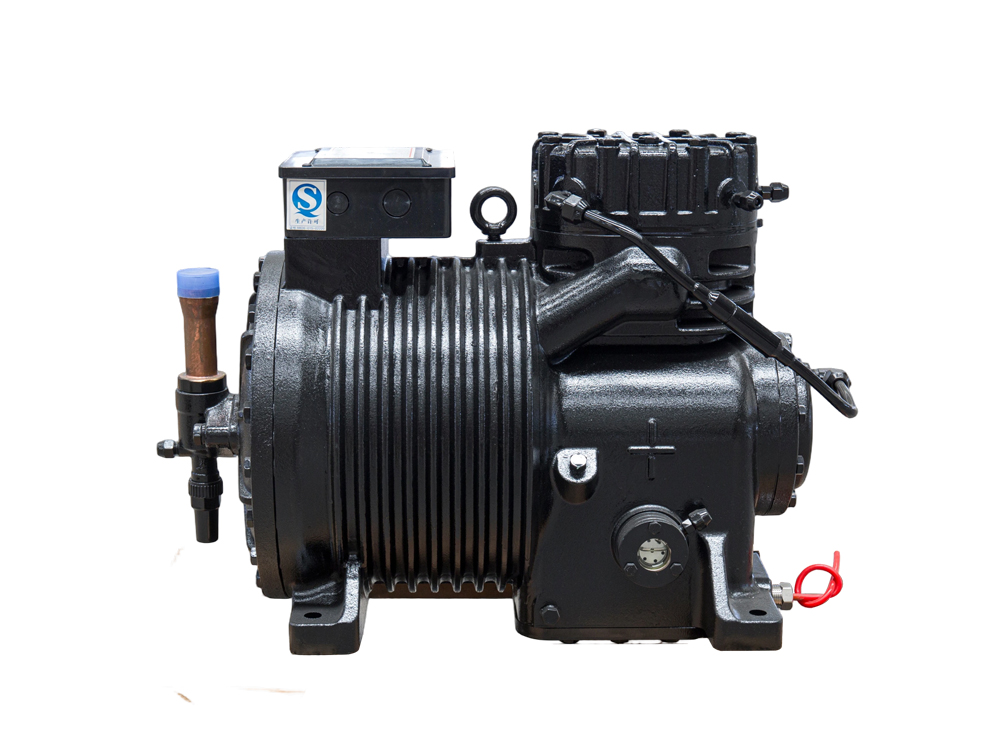The 2-Cylinder Compressor: Engine of Choice for Commercial Refrigeration
In the competitive world of commercial and industrial refrigeration, equipment reliability, energy efficiency, and operational quietness are paramount. The 2-cylinder compressor has emerged as the dominant solution in its power class, striking an ideal balance between performance, durability, and cost of ownership. This guide explores the technical advantages and applications of this workhorse technology, drawing on the manufacturing expertise of Zhejiang Diya Refrigeration Equipment Co., Ltd., a global provider with a legacy dating back to 1983.
1. The Heart of Smooth Operation: Core Advantages of the 2-Cylinder Design
The fundamental benefit of a 2-cylinder compressor lies in its mechanically balanced operation. With two pistons arranged 180 degrees apart, their opposing movements inherently cancel out a significant portion of inertial forces.
- Vibration Reduction: Vibration amplitude can be reduced by over 60% compared to an equivalent single-cylinder compressor.
- Noise Control: Operational noise is typically maintained below 65 decibels (dB), creating a more pleasant environment for retail spaces and restaurants.
- Improved Starting: The balanced design results in smoother crankshaft rotation and lower starting torque, minimizing stress on electrical components and reducing inrush current.
The engineering team at Zhejiang Diya leverages decades of experience to perfect this balance in their compressors, making them a preferred choice for noise-sensitive applications across European and American markets.
2. Mastering Efficiency: The 50% Capacity Control Technology
Refrigeration loads are rarely constant. The 2-cylinder compressor excels here with its efficient cylinder unloading capability, allowing it to match output precisely to demand.
- Capacity Range: Seamlessly switches between 100% capacity (both cylinders active) and 50% capacity (one cylinder unloaded).
- Energy Savings: At part-load conditions, this unloading can reduce energy consumption by 20-30% by avoiding the inefficiencies of frequent on/off cycling.
- Control Mechanism: An integrated solenoid valve and unloading mechanism automatically activates based on system suction pressure or temperature signals.
As an enterprise that integrates R&D and manufacturing, Zhejiang Diya has robustly incorporated this energy-saving technology into its product line, delivering tangible cost savings to clients in regions with high electricity costs, such as the Middle East and Africa.
3. 2-Cylinder vs. Single-Cylinder: A Data-Driven Comparison for Enhanced Lifespan
The reliability of a 2-cylinder compressor is rooted in its ability to distribute operational stress. A direct comparison with single-cylinder models reveals clear advantages in longevity.
| Performance Factor |
2-Cylinder Compressor |
Single-Cylinder Compressor |
| Bearing Load |
Load is shared, reducing force on individual bearings by ~40%. |
Entire load is concentrated on a single set of bearings. |
| Component Wear |
Smoother operation leads to more uniform and slower wear on pistons and rings. |
Higher vibration and imbalance accelerate wear. |
| Projected Lifespan |
Typically 25% longer under identical operating conditions. |
Shorter service life due to concentrated stress. |
Zhejiang Diya's in-house factory and ISO9001 certification ensure that every compressor is built to these durability standards, providing peace of mind for industrial clients worldwide.
4. Global Application Versatility: Adapting to Diverse Market Needs
The 2-cylinder compressor occupies a crucial power range, making it incredibly versatile. Zhejiang Diya designs its products to perform reliably across a wide spectrum of global climates and applications.
- Power Range: Optimally covers 3 HP to 15 HP, serving the majority of commercial refrigeration needs.
- Refrigerant Compatibility: Engineered for use with R404A, R407C, R134a, and other common refrigerants.
- Environmental Resilience:
- Enhanced motor cooling for high-ambient regions (stable operation up to 52°C).
- Anti-corrosion treatments on housings and components for humid, coastal climates.
This adaptability, backed by Zhejiang Diya's end-to-end sales and technical support, ensures the right compressor solution is available for every client, from Southeast Asia to the Americas.
5. Ensuring Long-Term Performance: Key Maintenance and Monitoring Parameters
Protecting your investment in a 2-cylinder compressor requires a proactive maintenance strategy. Based on Zhejiang Diya's extensive field service experience, monitoring these key parameters is essential for maximizing service life.
Oil System Maintenance
- Maintain oil level between 1/2 and 2/3 of the sight glass.
- Change oil and filter after the first 500 operating hours, and subsequently every 2,000 hours (or as oil analysis dictates).
Operational Data Monitoring
- Continuously log suction and discharge pressures; deviations often signal system issues like fouling or refrigerant charge problems.
- Track running current (Amps) against the nameplate rating to detect potential motor overload or system blockages.
Mechanical Condition Checks
- Listen for unusual knocking or rattling sounds, which may indicate issues like broken valve plates or worn connecting rod bearings.
Zhejiang Diya's global after-sales network stands ready to support clients with genuine spare parts and expert troubleshooting, ensuring that their compressors deliver reliable performance throughout their entire operational life.


 English
English русский
русский Español
Español







